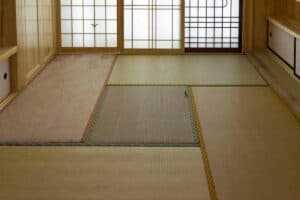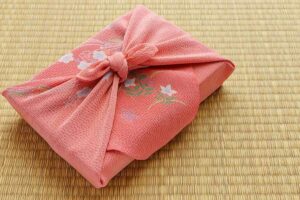A Bonsai tree is a beautiful gift and if you have one in your care, knowing the right way to maintain it is essential to keep its comely proportions.
Knowing when to water a Bonsai tree when looking after it indoors can be a challenge and is easily overdone.
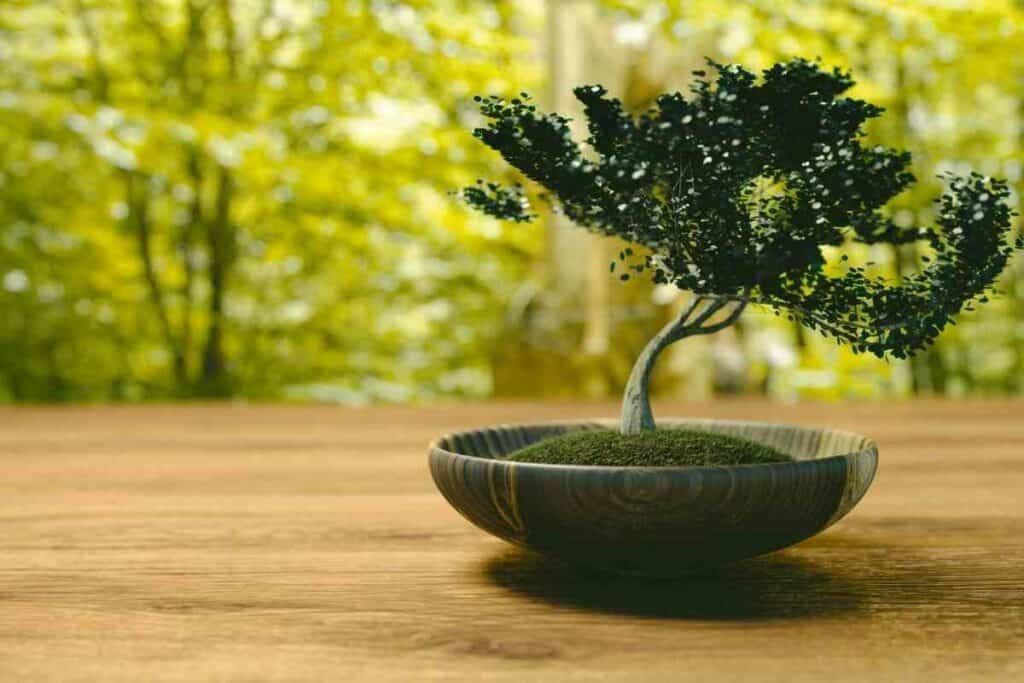
If you’re wondering how to keep your Bonsai tree properly watered, this quick and simple guide provides all the pointers you need for a Bonsai tree that will flourish in your home.
Table of Contents
The Beauty of Bonsai (盆栽)
Bonsai is the peculiarly Japanese art of cultivating and training miniaturized trees in small pots.
As you’ll know it has been favored and adopted all over the world because of its beautiful and calming aesthetic.
Bonsai actually developed from the Chinese practice of penjing, where skilled artisans crafted entire landscapes in small pots.
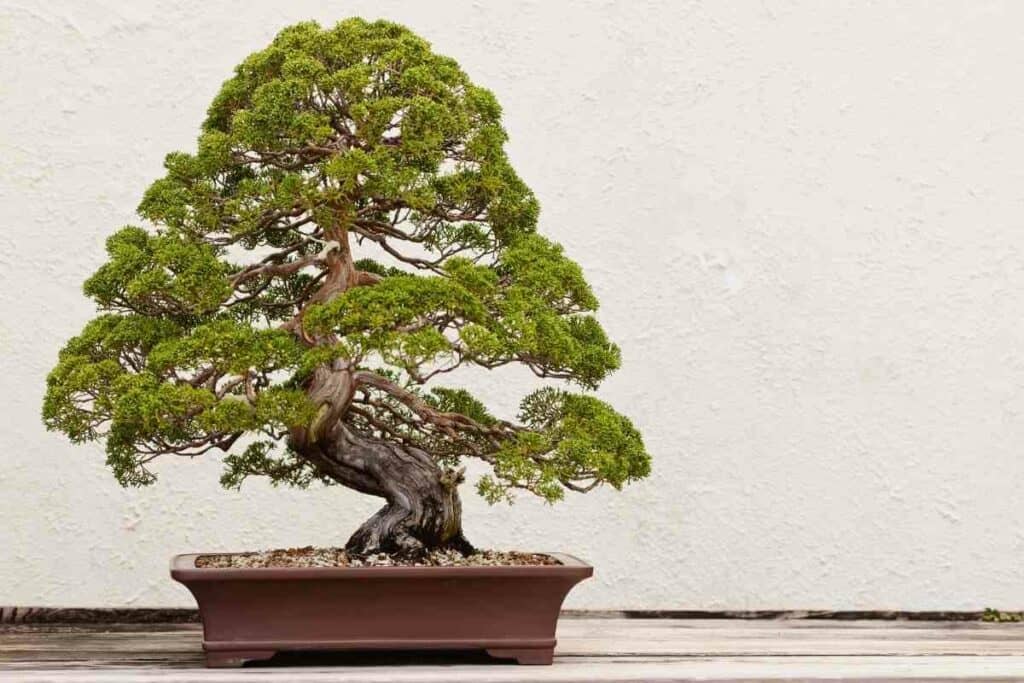
The knowledge and expertise were shared during the Tang dynasty (618 – 907 AD) and subsequently developed into Bonsai. Bonsai, however, differs because the focus is 100% on trees.
The contemplative experience and discipline of maintaining the trees makes Bonsai a pleasing activity.
Young trees are cultivated from a cutting or seedings with the right characteristics and proportion.
Ideally – The plan should be a perennial woody-stemmed tree or shrub that branches. Over time, it is carefully cultivated to remain in its pot with careful shaping to flourish according to its intended design.
Cultivating indoor and outdoor Bonsai trees are completely different
The key to success with Bonsai is attentive care and this differs for indoor and outdoor plants.
Outdoor Bonsai are much more exposed and benefit from the changing seasons making watering a simpler matter.
The challenge only begins if you bring it indoors for the winter.
The priority is not to underwater the Bonsai…
Underwatering kills Bonsai trees very quickly!
This is because Bonsai trees can dry out quickly, they really don’t retain moisture well.
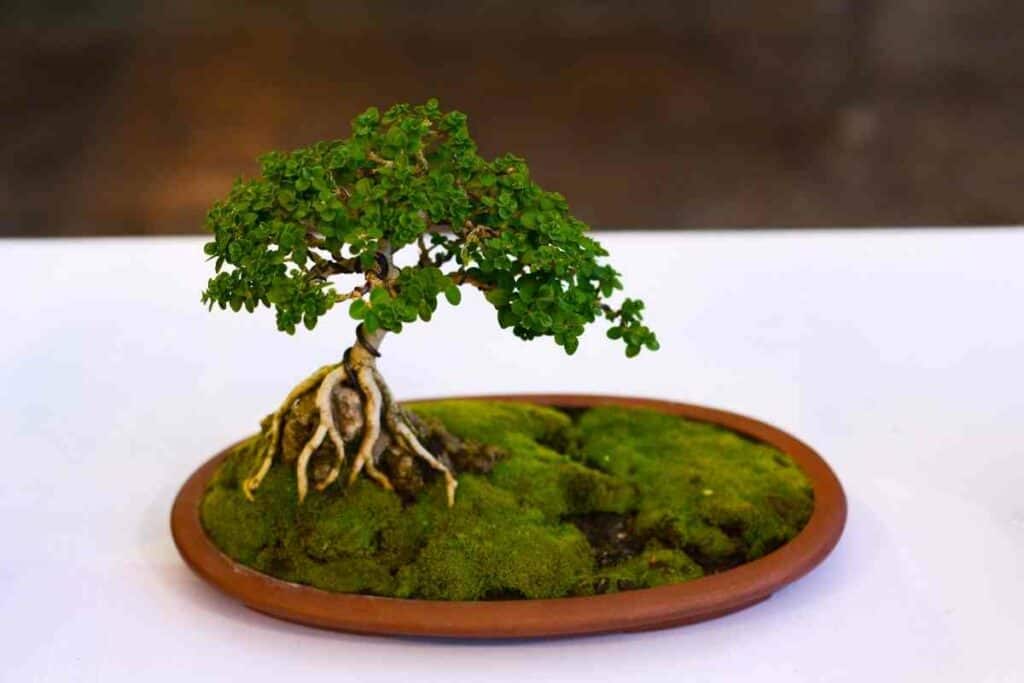
As a small tree, transpiration, the loss of water from the foliage of the tree, has a much greater impact than on a normal tree.
This means even within hours on a hot day, the leaves of a Bonsai tree can shrivel and crisp.
…but overwatering can cause problems too!
Overwatering is easily done if the plant is regularly watered without attention to whether or not the tree actually needs it.
Waterlogged soil, soaks, and rots the roots of the tree, eventually killing it. It also increases the potential for fungal disease.
There are two methods for watering your indoor Bonsai
Bonsai watering can be done using one of three techniques depending on the type and maturity of tree.
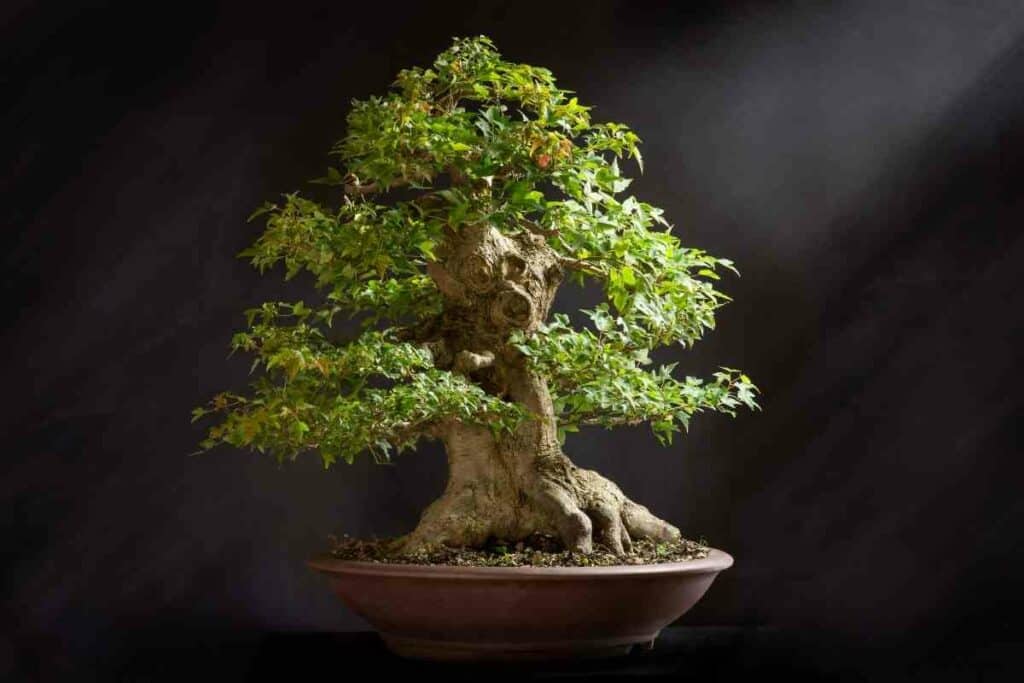
Here are your options.
Bottom watering
Bottom watering is usually used for immature trees.
It is a simple method that most people can complete confidently.
- To bottom-water your Bonsai, you will need a small, shallow tub that you should fill with water.
- Place the pot of your Bonsai tree in the rub so that it can absorb as much water as it needs.
- Leave the Bonsai for no more than 30 minutes.
- You can then lift out the pot and place it in its original position.
- Repeat whenever the upper layer of soil starts to dry.
Top watering
Top watering is a relaxing aspect of Bonsai care. It works best on larger, more mature Bonsai trees.
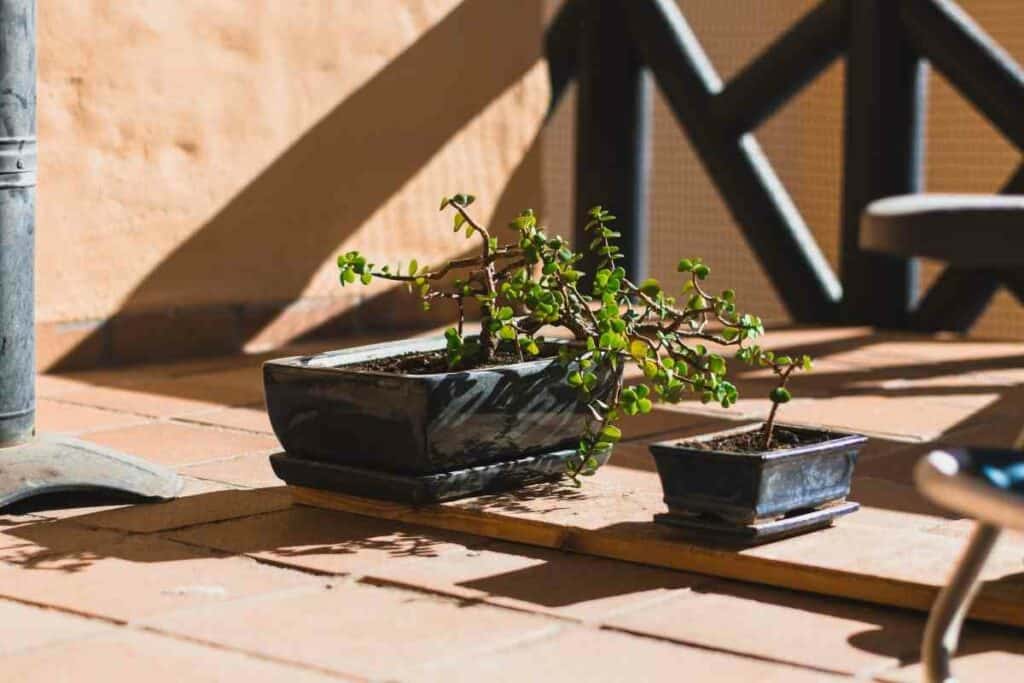
Use a Bonsai watering can with a small rosette and tiny holes. Use your watering to recreate a shower of rain, with water gently flowing down the plant to its roots.
Give the Bonsai tree a good watering, until water runs through the drainage holes so you know that the root network is thoroughly soaked.
You can also water a larger tree under the kitchen sink.
Best soil for watering a Bonsai tree
You can give your Bonsai a helping hand by potting it in a soil mix that helps your plant to keep water.
The soil preparation should balance organic nutrition for the tree with moisture-retaining elements and good drainage.
Consider including:
- Organic potting compost – to fertilize the soil
- Pumice and akadama – add for their great moisture retaining properties and root support
- Lava rock – to aid aeration
- Sand and perlite – can aid in drainage
Also, be sure to repot your plant as it grows so that the roots don’t become compacted.
Watering regimen for different types of Bonsai tree
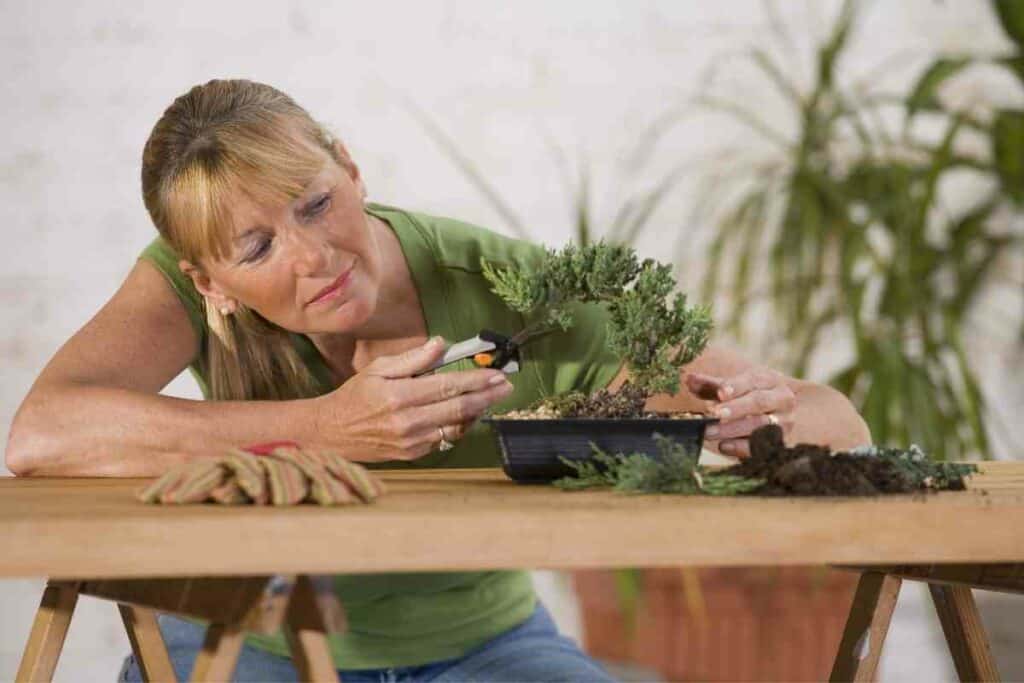
The different Bonsai trees have different watering needs.
Note the category of your tree and water accordingly.
Deciduous Bonsai trees
Deciduous Bonsai trees should be regularly watered when small, as frequently as on alternate days.
Coniferous Bonsai trees
Bonsai conifers are vulnerable to overwatering and rot.
They should only be watered when the upper soil has died out, perhaps once every two to three days. If the surface soil is damp, do not water it!
Evergreen Bonsai trees
Water your evergreen Bonsai tree no more than three times per week.
Adjust according to the specific conditions of your tree. If you have central air conditioning or heating, you may need to water more frequently.
Check the soil with a toothpick to be sure.
Can I water my Bonsai tree with tap water?
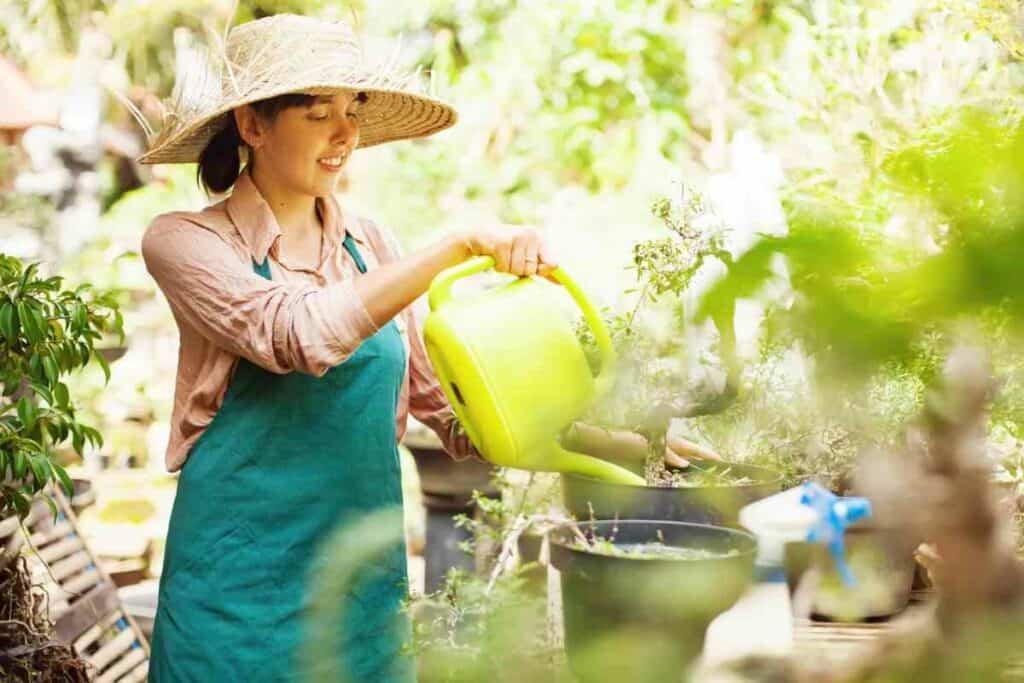
Some Bonsai owners are concerned about using regular tap water on their trees.
However, most drinking water should be fine.
If you have hard water, you may want to hold back on using it as the calcium and magnesium salts may be problematic for the tree.
Rounding up
As you can see, watering your Bonsai just requires a little common sense and TLC.
If your tree does not do well with your watering regimen simply adjust it according to its needs.
- Best Japanese Knives Top Picks for Every Kitchen
- Japan’s Bold New Trend: Dressing Like a British Gentleman (or at Least Trying)
- 7 Best Japanese Sunscreen Products You Can Buy Online
- 5 Best Japanese Makeup Brushes for a Flawless Finish
- 7 Benefits Of Tatami Mats You Should Know
- The Best Furoshiki Wrapping Cloths: Inspiration, Ideas & Cloths You Can Buy





